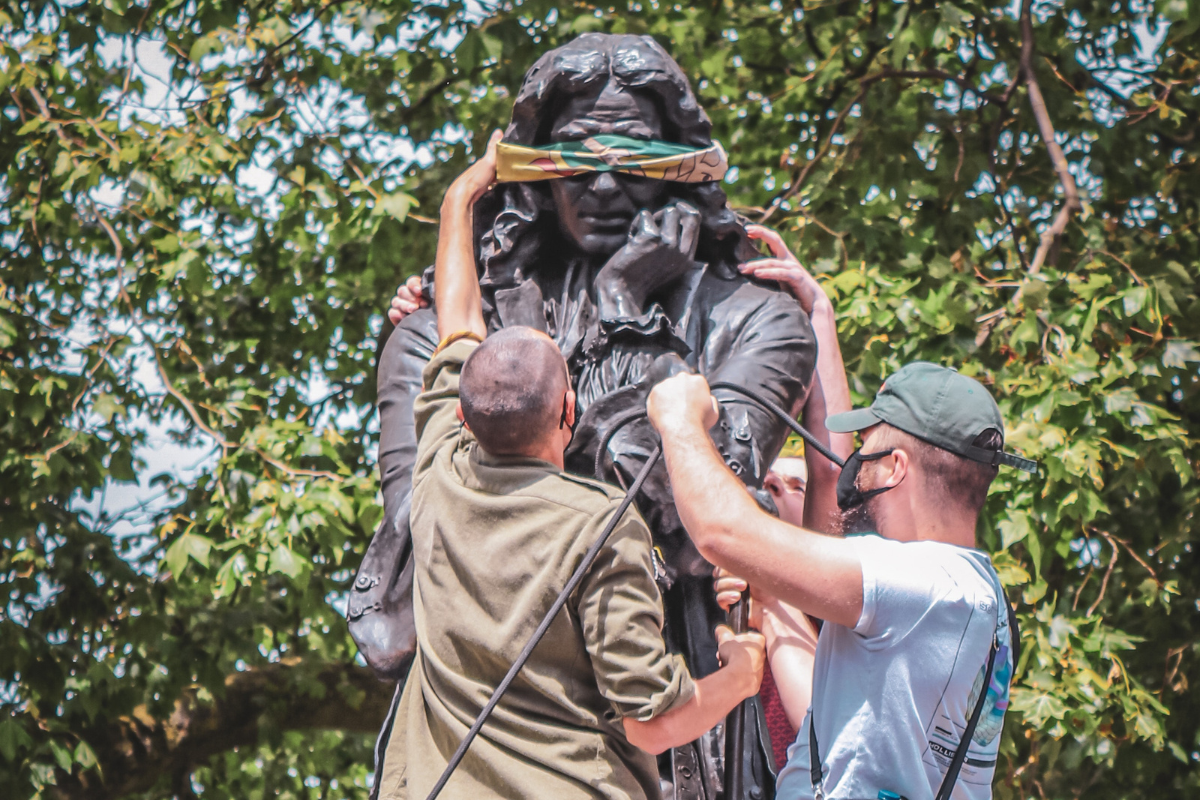
A statue of slave trader Edward Colston was toppled by protesters in Bristol in 2020
Photo: Boys in Bristol Photography - Pexels
DCMS pushes ‘retain and explain’ approach on contested statues
Guidance designed to help custodians of controversial public statues and monuments deal with calls for their removal has been published by government.
Cultural institutions should retain contested historical items such as statues and monuments and explain their historical context rather than removing them, the government has said.
Known as ‘retain and explain,’ the government's strategy for contentious heritage assets has, since 2021, been to keep them in place, accompanied by an explanation of their historical context. The issue came to prominence in 2020 after protesters in Bristol toppled a statue of merchant and trans-Atlantic slave trader Edward Colston.
The Department for Culture, Media and Sport (DCMS) has today (5 October) published a five-step "tool-kit" for cultural decision-makers to follow when faced with calls to remove a public statue or monument. It says these recommendations will “help to avoid future occurrences of the hasty, forced, or ill-considered removal of contested assets”.
READ MORE:
- 'Woke minority' fights back against contested heritage policy
- Arm's-length policy at risk in 'contested heritage' debate
Developed with the Heritage Advisory Board – a government panel of seven academics and heritage experts – and Historic England, the core principle of the guidelines is that controversial assets should remain in situ accompanied by an explanation "so that a fuller understanding of the historical context can be known, understood and debated".
Custodians are also asked to consider “creative approaches to contextualising or explaining” that are non-text-based.
The guidance stresses the importance of engaging in public consultation, stating that "any discussion about how to deal with a contested heritage asset must not just be an internal conversation; the public and wider community will also have views and should be included.”
In the five-stage guide, custodians are advised that they do not need to undertake a public consultation until step three, after initial internal consideration and a second, more detailed examination to decide if criticism of an asset “appears credible.”
Where objections are deemed reasonable, decision-makers retaining an asset without any amendments are encouraged to consider making their reasoning public.
Commenting on the guidelines, Frazer said: "History is nuanced and complex. It is full of grey areas, which is what makes it so interesting, and, of course, there are times when statues and monuments depict people or events that we very much disapprove of today.
"At the same time, the UK has a proud history as an engine for progress, democracy and liberal values. That is why I want all our cultural institutions to resist being driven by any politics or agenda and to use their assets to educate and inform rather than to seek to erase the parts of our history that we are uncomfortable with."
Frazer also spoke about the new recommendations in her speech to the Conservative Party conference, calling the removal of statues "cancel culture".
"What some call culture wars, I say, is standing up for our principles: pride, tolerance, understanding, learning, respect, fairness and common sense," she said.
Join the Discussion
You must be logged in to post a comment.